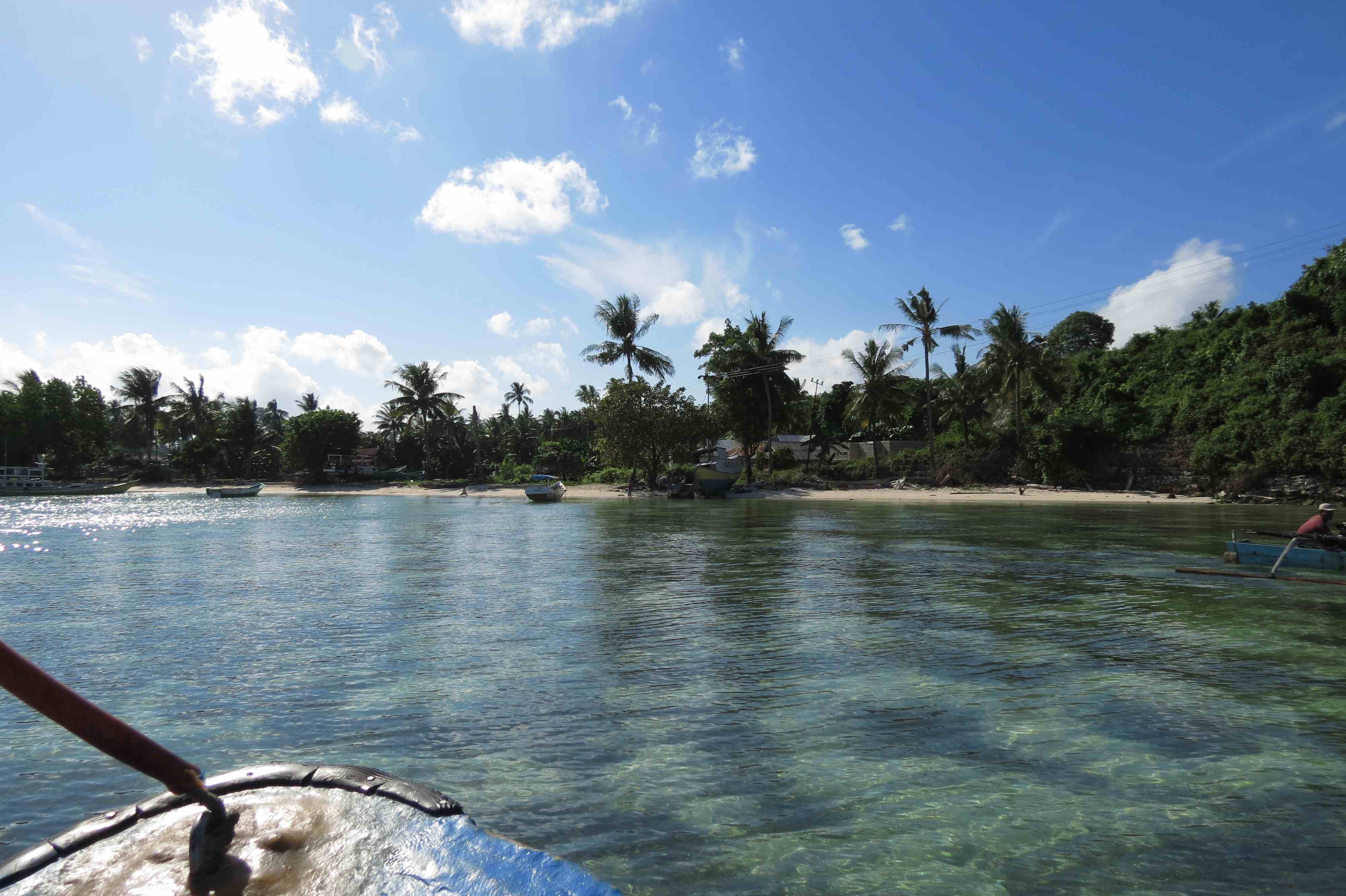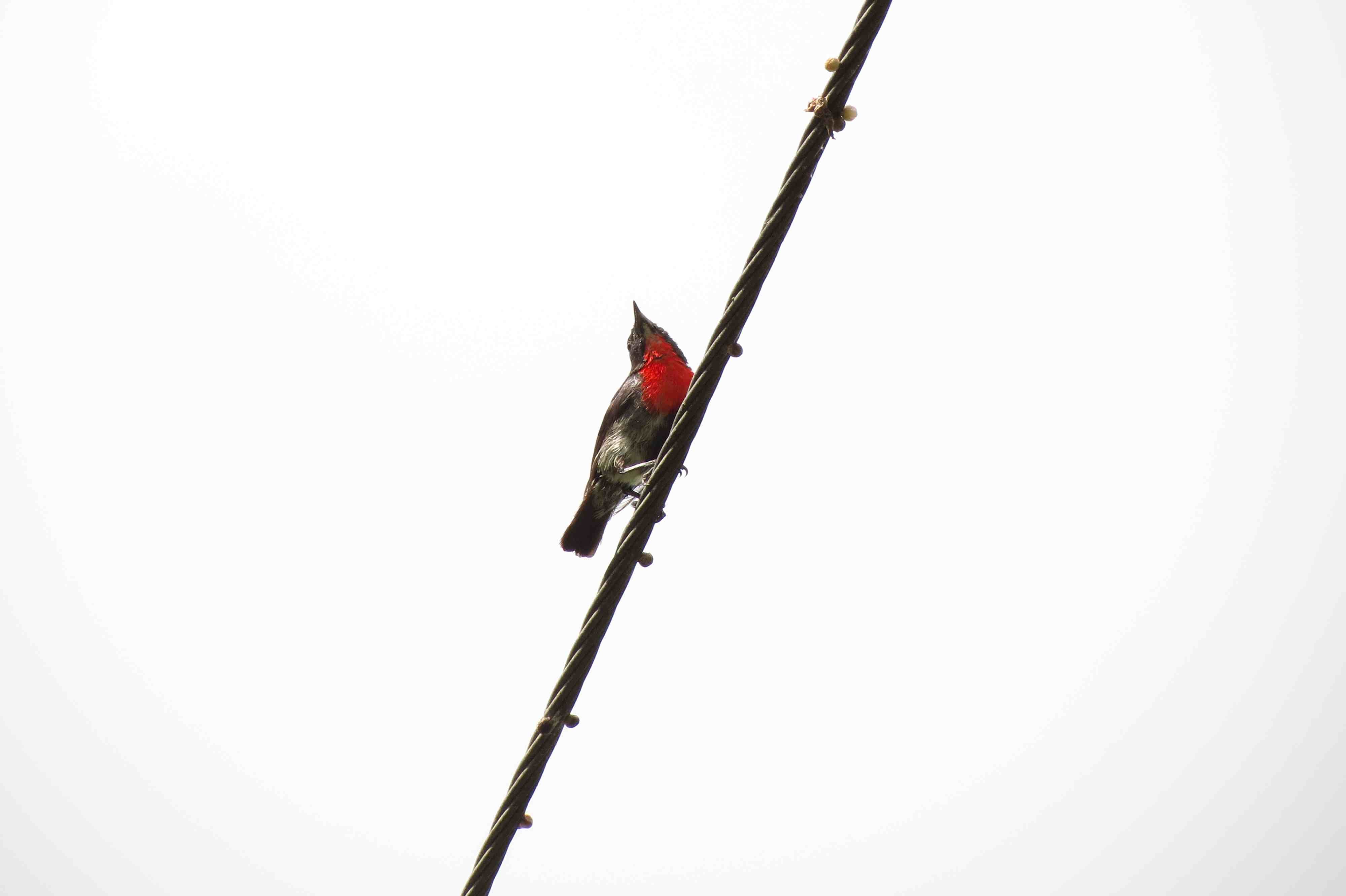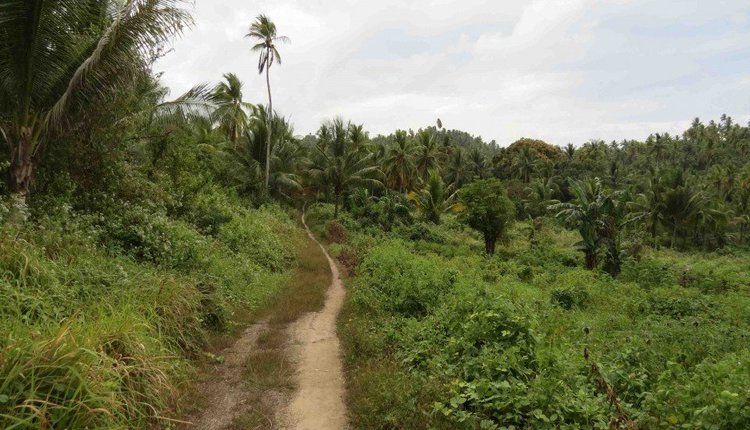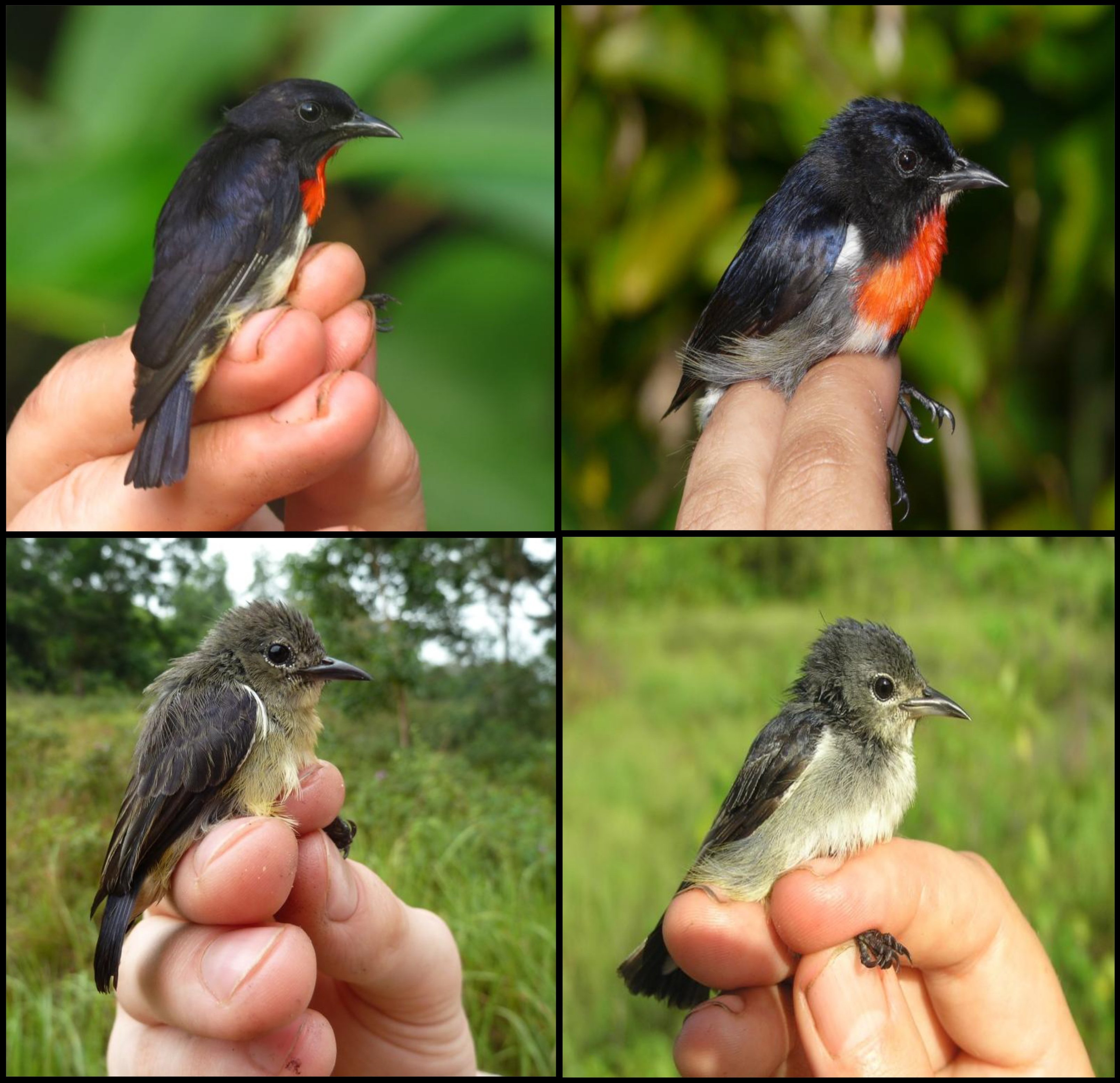The reclassification of a bird species and why it matters: introducing the Wakatobi Flowerpecker
I’ve been meaning to write some articles for HeadStuff for a while now but it seems that I just kept getting bogged down in writing as part of my PhD research. However, with the publication of my first paper from my research, I figure this is as good an opportunity as any to start! My work focuses on bird populations from the tropical and biodiversity-rich region of Sulawesi, Indonesia – an unbelievably beautiful and unique part of the world that I am tremendously lucky to work in. I am happy to say that the paper has just been published in the open access journal PLOS ONE. To read the full paper for free, click here. This work is a collaborative effort from staff in the Department of Zoology at Trinity College Dublin and Haluoleo University in Sulawesi, Indonesia. Here, I’d like to briefly discuss the findings of this study and their wider importance.

I study bird populations from peninsular South-east Sulawesi and the nearby Wakatobi Islands. The main focus of this paper was to reassess the taxonomic status of a population of birds from the Wakatobi Islands (i.e. whether these birds represent a species or subspecies). The birds in question belong to the flowerpecker family (Dicaeidae); a group of small and colourful, arboreal passerines found from Southeast Asia to Australia that feed primarily on fruit. The Wakatobi birds were originally described as a separate species (Dicaeum kuehni) from those on mainland Sulawesi by the renowned avian taxonomist Ernst J. Hartert in 1903. However, for reasons that remain unclear in the literature, the Wakatobi birds were later reclassified as a subspecies of the Grey-sided Flowerpecker (Dicaeum celebicum) from mainland Sulawesi. We therefore decided the Wakatobi populations were deserving of reassessment. From comparisons of plumage and morphology (that is, the measurement of various features such as a bird’s wing and bill), as well as estimates of genetic divergence and phylogenetic relationships between Wakatobi and Sulawesi populations, our results suggest the Wakatobi birds deserve to be recognised as a distinct species. More than 100 years on, we recommended the Wakatobi populations be reclassified as Dicaeum kuehni, a species found only on the Wakatobi archipelago and put forward the common name ‘Wakatobi Flowerpecker’. For more information and detailed methods and results check out the paper.

“So what?”, some of you might say. Well, despite centuries of work from naturalists aiming to estimate the number of different species that exist or have existed on Earth (be they animal, plant, fungus, bacteria, etc) and further understand their evolutionary relationships, we still have a lot to learn. Therefore, this research adds another tiny piece to this enormous and incomplete jigsaw. Through a greater understanding of life on Earth we can better attempt to answer some of the great philosophical questions, such as ‘Where and how did life start?’; ‘How and why do new species appear?’; ‘Why has life evolved to become as it is today?’; and ‘How have we, as humans, come to be?’.
Anyway, let’s be honest, who doesn’t enjoy learning of a recently discovered species or simply one they haven’t heard of before (be they as cute as the recently discovered olinguito or as frighteningly ugly as the goblin shark)? But the endeavour to discover species and classify and quantify the diversity on life on Earth bring us much more than entertainment and endless fascination, it also has very practical applications. Data on the distribution and conservation status of species are one of the major sources of information used to inform conservation policy. Therefore, as we are in the midst of an extinction crisis, it is vital that these data are accurate.

In order to maximise our understanding of biodiversity, particularly in the remote and poorly known Sulawesi region of Indonesia, we require multi-disciplinary research. For example, take a look at Figure 1 below. On the left are a male (above) and a female (below) Grey-sided Flowerpecker from mainland Sulawesi. On the right are a male (above) and a female (below) Wakatobi Flowerpecker. They look very similar, right? This is true. However there are subtle but consistent differences in plumage between the species (again, see the paper for more info on this). Without the collection of detailed morphological data and the generation of genetic sequences, we may have incorrectly concluded that these make up just one species, when in fact they are morphologically distinct, reproductively isolated and genetically very different. This demonstrates the need for modern research, not just in Sulawesi, but globally, to employ integrative research, combining traditional comparisons of colour, size and shape with modern genetic and phylogenetic analyses.

Despite the knowledge that the Sulawesi region is home to a large number of remarkable birds that are found nowhere else in the world, it has remained relatively poorly studied. Furthermore, there has been a lack of integrative ornithological research in the area and very little genetic sampling. Therefore, it is likely that avian species’ richness in the Sulawesi region is underestimated and that numerous bird species are awaiting description. On top of this, Sulawesi’s biodiversity is facing major threats from a rapidly expanding human population and mass habitat destruction, among other things. Unless we can encourage more multi-disciplinary research within the region, we will likely fail to recognise evolutionarily distinct lineages and run the risk of losing them forever.
A number of questions lead on from this. For example, why have the flowerpeckers on the Wakatobi islands become so different to their close relatives on mainland Sulawesi? I.e. what are the evolutionary pressures that have driven the divergence of the Wakatobi Flowerpeckers? By investigating this more, we hope to learn more about the evolutionary processes of speciation and adaptation to living on islands. As the Wakatobi Flowerpecker is found only on the Wakatobi Islands, the protection status afforded to the islands may require reassessment. Furthermore, considering one unique bird species has evolved on the Wakatobi, could there be more? Watch this space.
More images (gallery).

Interesting. Have your findings been supported by other teams? How long do you think it’ll take before the classification is accepted?
Hi Mark. There are currently no other research teams studying the birds of the Wakatobi islands (and very few in Sulawesi in general) so this is entirely new work in terms of the analyses conducted. However, our results support those of Ernst Hartert in his work on the birds of the region published in 1903. It remains to be seen if the reclassification will be adopted by taxonomic and ornithological bodies as these changes usually take a few years before implementation, but so far the response has been positive. BirdLife International will be releasing a new taxonomic and conservation status review for small passerines such as the Wakatobi Flowerpecker and it will be interesting to see if it’s included. Thanks for the interest.
Seán